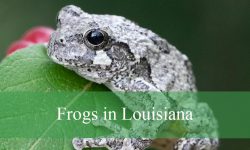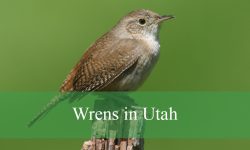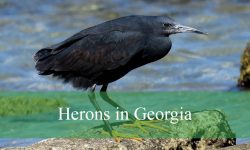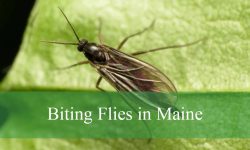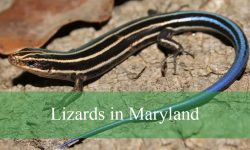Spiders come in a variety of colors, with white spiders being some of the most fascinating due to their unique appearances and often impressive camouflage abilities. While some white spiders are naturally colored, others can change their hues to blend with their surroundings.
Below is a list of 20 types of white spiders, including their characteristics, habitats, and identification tips.
Different Types of White Spiders
Spinybacked Orbweaver
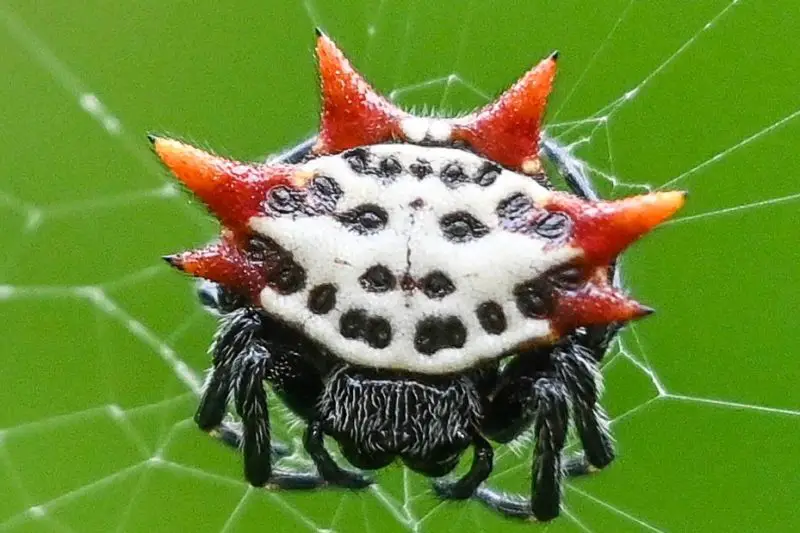
The Spinybacked Orbweaver (Gasteracantha cancriformis) is a unique spider commonly found in North and Central America. It thrives in gardens, woodlands, and around homes, especially near citrus trees. This species stands out due to the six spines on its back, which act as a defense mechanism against predators.
Its body is mostly white, featuring black spots on the dorsal side. Female Spinybacked Orbweavers are significantly larger than males, growing between 7–9mm, while males only reach about 2mm. Their size difference makes females much easier to spot.
These spiders create intricate, circular webs to catch various insects, including mosquitoes, moths, and beetles. Female Spinybacked Orbweavers are particularly skilled at capturing large flies, which they secure at the center of their webs, where the silk is believed to be stronger. Since they help control insect populations, they are often considered beneficial around homes and gardens.
Goldenrod Crab Spider
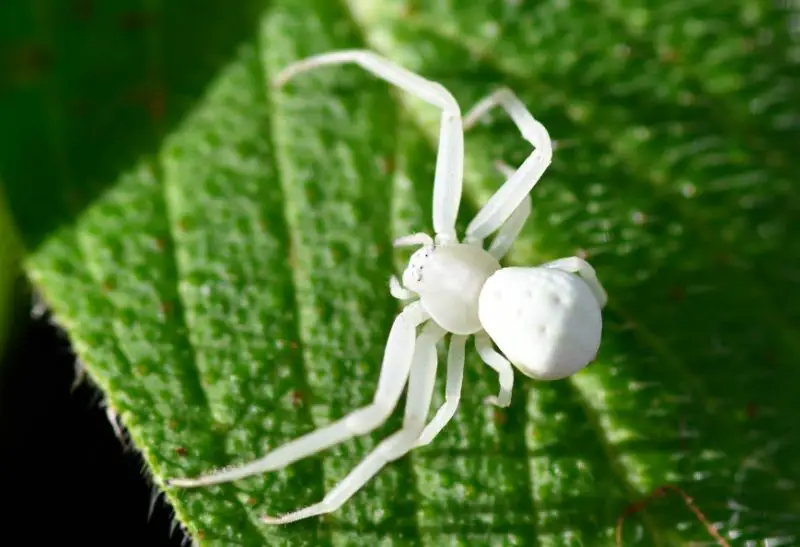
The Goldenrod Crab Spider (Misumena vatia) gets its name from its crab-like appearance, as its legs extend sideways similar to those of a crab. This species is commonly found on flowers, where it waits to ambush pollinating insects such as bees and wasps. Unlike web-building spiders, Goldenrod Crab Spiders do not spin webs but rely on their excellent camouflage and hunting skills to capture prey.
These spiders can vary in color, with pale yellow and white being the most common. Males are often white with pink stripes, while females can be either white or yellow, sometimes displaying red or pink markings along their sides. One of their most fascinating traits is their ability to change color to blend with the flowers they inhabit.
This color adaptation enhances their ability to remain undetected by both prey and predators. By matching their surroundings, Goldenrod Crab Spiders become highly effective ambush hunters, making them one of the most unique spider species in nature.
Spined Micrathena
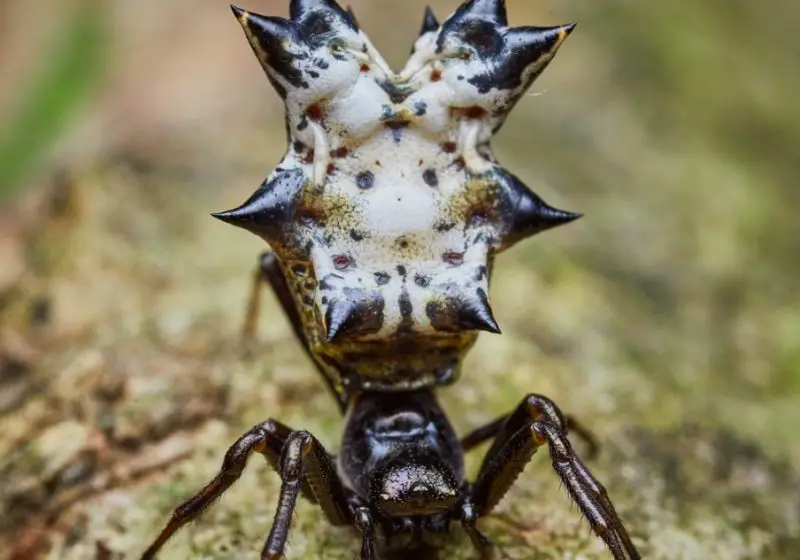
The Spined Micrathena (Micrathena gracilis) is a small yet distinctive spider known for its spiky, black-and-white appearance. It is commonly found in dense shrubs and wooded areas, where it constructs intricate, wheel-shaped webs to catch insects. Unlike some other orbweavers, this species is often overlooked due to its reduced body size.
Females are larger than males, measuring between 7–10mm, while males typically range from 4.5–5mm. Both sexes have black spines on their abdomens, which serve as a defense mechanism against predators. Despite their small size, these spiders are efficient hunters, capturing insects larger than themselves in their strong, vertical webs.
Spined Micrathena spiders are active from spring to late October. They overwinter as eggs, hatching in early summer. Their presence in forests and gardens helps control insect populations, making them beneficial to the ecosystem. These spiders spend most of their time near their webs, waiting patiently for prey to get trapped.
Northern Yellow Sac Spider
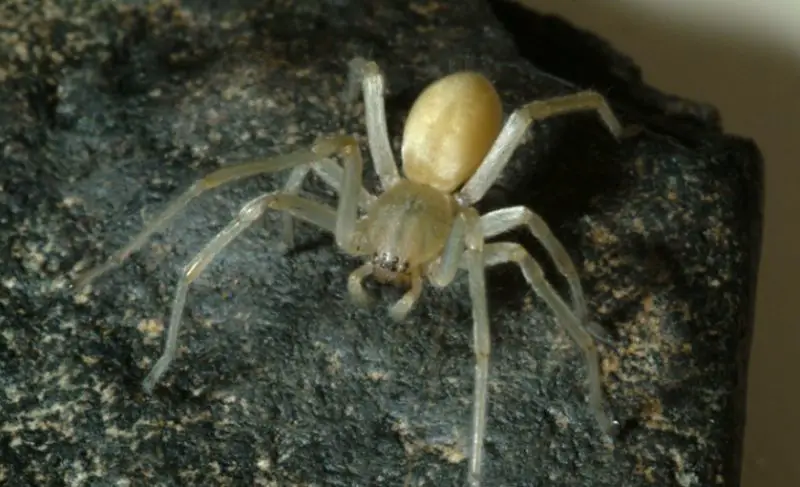
The Northern Yellow Sac Spider (Cheiracanthium mildei) is a small but aggressive spider found in North America, Asia, and Africa. Unlike web-building spiders, this species constructs small silk sacs where it hides during the day. At night, it emerges to hunt insects, making it a highly effective nocturnal predator.
This spider has a tan or pale yellow body, often appearing almost white. It is known for its painful bite, which can cause irritation and, in some cases, minor skin necrosis. Unlike many other spiders, the Northern Yellow Sac Spider bites without provocation, making it one of the most feared species in gardens and homes.
Attracted to artificial lights, these spiders are often found near campsites and outdoor areas where people gather. Their presence in homes is also common, as they seek shelter indoors during colder months. While their venom is not lethal, their bites can cause discomfort, making them a species to be cautious of.
American Green Crab Spider
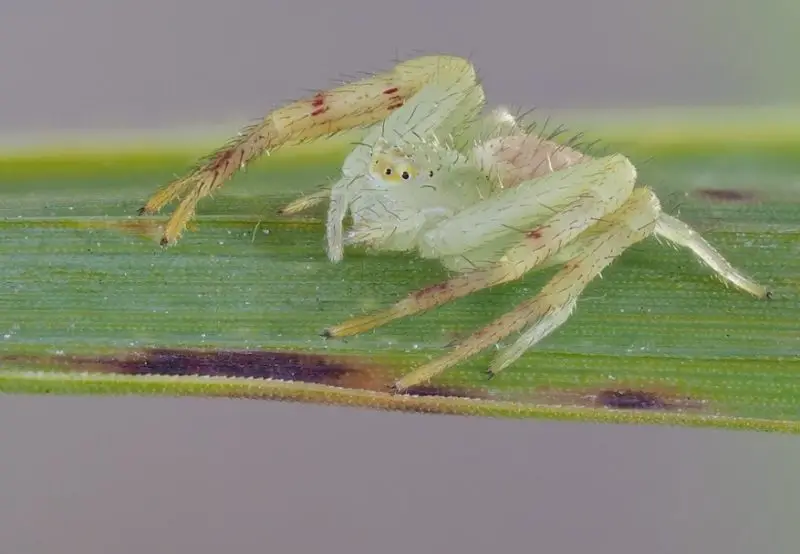
The American Green Crab Spider (Mecaphesa asperata) is a small, adaptable spider known for its pale green body and ability to camouflage itself against flowers. Growing between 3 and 7mm, females are significantly larger than males. Their coloration helps them remain undetected while hunting pollinating insects such as bees, beetles, and even butterflies.
Like other crab spiders, this species does not build webs but instead relies on ambush tactics. Its long, crab-like legs allow it to move sideways with ease, making it a swift and efficient predator. The forelegs are particularly long, enhancing its resemblance to crabs.
Mating in this species is complex. After laying eggs, females guard the egg sac before dying, leaving the spiderlings to hatch and fend for themselves. The American Green Crab Spider plays an important role in controlling insect populations, making it a valuable part of its ecosystem.
White-banded Crab Spider
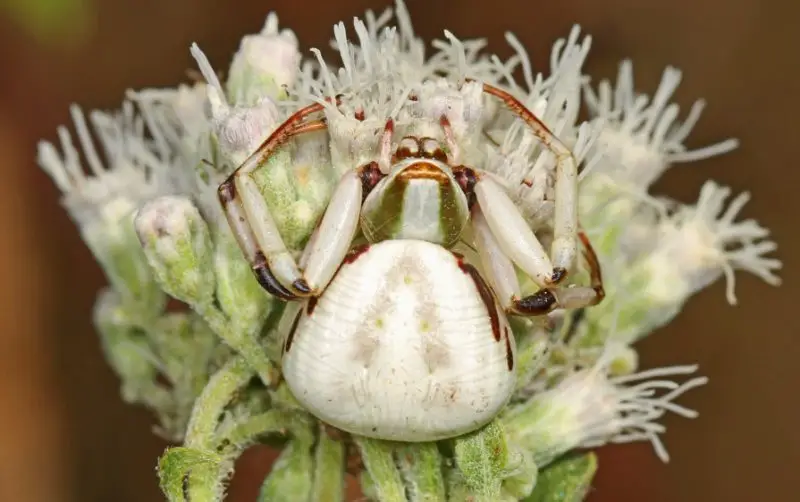
The White-banded Crab Spider (Misumenoides formosipes) is a species that can be either white or yellow, with the remarkable ability to change its color to blend in with the flowers it resides on. This color change allows them to stay hidden from potential prey or predators. As a predatory species, these spiders sit patiently on flowers, waiting for the perfect moment to ambush insects or even other crab spiders.
The White-banded Crab Spider moves its legs in a crab-like fashion, with the front pair being significantly longer. These front legs are crucial for catching and pinning down prey. Unlike many other spiders, they do not spin webs to trap their food. Instead, they rely on ambush tactics.
Mating among males is highly competitive. Interestingly, adult males guard females until they reach sexual maturity, ensuring a successful mating. Both males and females can often be seen on white or yellow flowers.
Gray Wall Jumping Spider
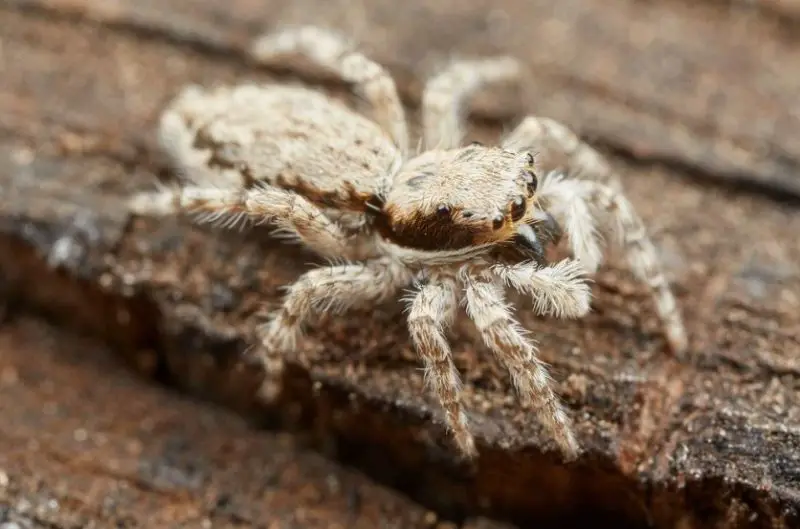
The Gray Wall Jumping Spider (Menemerus bivittatus) is a common species in the Southern United States, often seen in and around homes. This black and white spider is known for its remarkable jumping abilities. It has distinct V-shaped markings on its dorsal side, which help to identify it. As a member of the jumping spider family, it relies on excellent vision to spot its prey, leaping long distances to pounce on insects.
This spider is active year-round, primarily living indoors. Its mating season runs from fall to spring, aligning with its indoor lifestyle. Female Gray Wall Jumping Spiders can lay up to 60 eggs at a time. These nocturnal spiders are often spotted on exterior walls of homes and garages, particularly where insects are attracted to outdoor lights, providing the spider with ample hunting opportunities.
White-jawed Jumping Spider
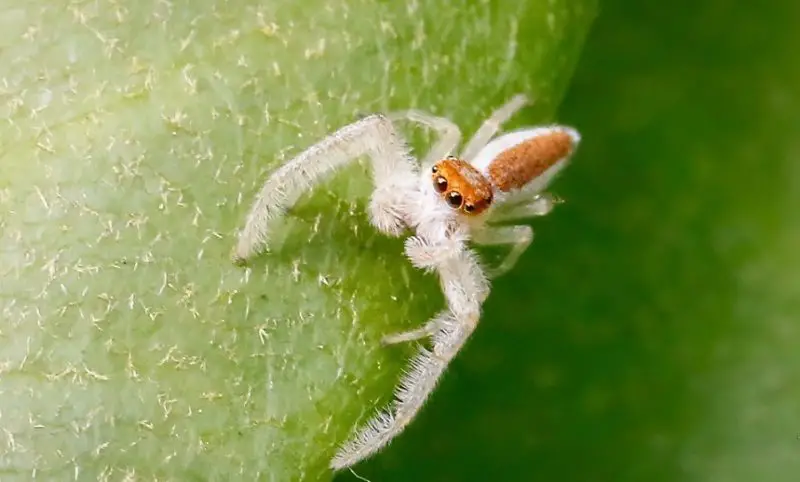
The White-jawed Jumping Spider (Hentzia mitrata) is a member of the Salticidae family, recognized for its elongated body and distinctive hairy legs. Its body is mostly white, with short white hairs covering its legs, and its dorsal side is highlighted by golden coloring. Unlike many spiders, this species does not spin webs but actively hunts for insects and small bugs.
Known for its excellent vision, the White-jawed Jumping Spider has four eyes arranged in a single row. The central pair is notably larger than the outer pair. This spider is both diurnal and nocturnal, found throughout the U.S. and often spotted around homes where it hunts insects drawn to artificial lighting.
Striped Lynx Spider
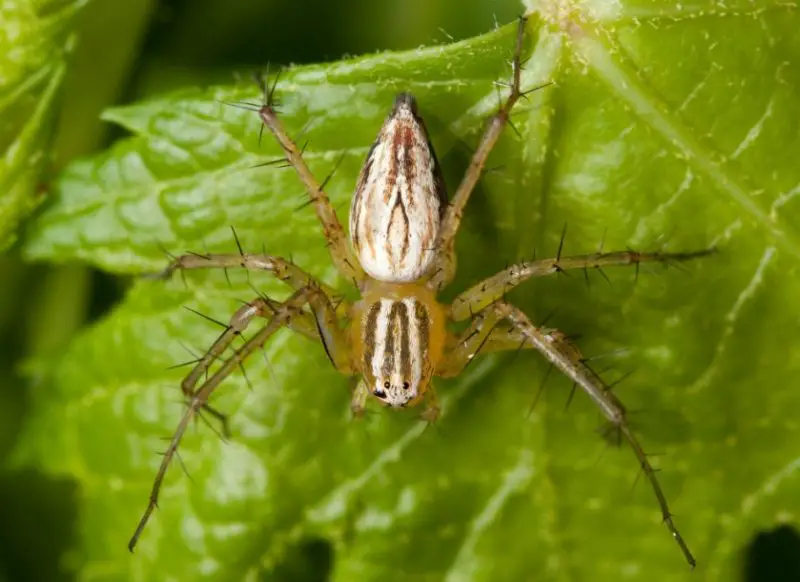
The Striped Lynx Spider (Oxyopes salticus) is easily identifiable by its tan-brown body, marked with thick white lines, and long black hairs on its legs. This species is highly beneficial in agricultural settings, as it preys on harmful flies, sometimes reducing their numbers to the point of extinction on crops. These spiders are part of a unique species complex that can use the scent of certain flies to move toward or away from specific areas.
Research indicates that Striped Lynx spiders can learn to recognize specific fly odors during their spiderling stage. As spiderlings, they don’t feed on flies but consume nectar and honeydew instead. These spiders are commonly found in crops, where they help control pests like bollworms and tobacco budworms, and they are especially common on soybean crops.
Male Striped Lynx Spiders are notably smaller than females, growing up to 4mm in length, while females can reach up to 16mm. Males mate multiple times a year, while females typically mate once. The female lays her egg sac on the underside of leaves, ensuring protection for the eggs from predators.
Garden Ghost Spider
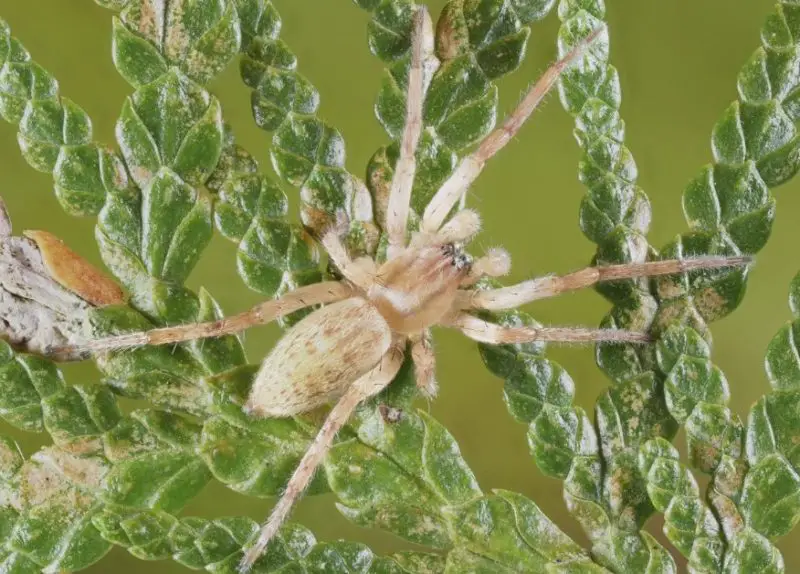
The Garden Ghost Spider (Hibana gracilis) is a small species, typically measuring up to 0.5 inches, and is often seen in a variety of colors, including an off-white version that blends in well with gardens and man-made structures. This spider is easily identifiable by its long legs and the black marks on its head. During the day, it remains hidden in a small, cocoon-like web it spins for itself, often found in tall grass, under leaves, or beneath piles of wood. At night, it becomes active, hunting insects and small prey.
These spiders are nocturnal hunters, becoming active at night to search for prey. They are primarily found in warm climates such as Florida, where they remain active year-round. However, in colder regions, they enter a state similar to hibernation during winter and can overwinter as spiderlings. It’s best to avoid handling Garden Ghost Spiders, as their bite is known to be painful.
White Micrathena
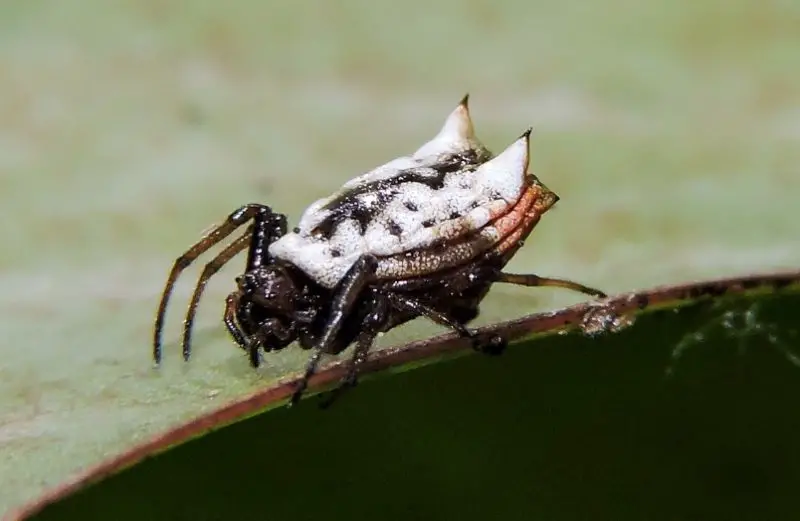
The White Micrathena (Micrathena mitrata) is a small, white-bodied spider, often spotted in gardens due to its pale color and small black marks. With dark-colored legs, they are easy to identify despite their small size. These spiders are particularly known for building webs that trap a variety of insects, including mosquitoes, which is why they are often regarded as beneficial in controlling pests.
White Micrathena spiders are capable of catching even larger insects in their webs. Males typically grow up to 3mm in size, while females are larger, reaching 6mm. One of the main concerns about these spiders is the number of webs they create, as both males and females construct them. However, these webs provide a valuable service by trapping mosquitoes, flies, and gnats, making them an asset for homeowners looking to reduce the presence of these pests in their gardens.
Humpbacked Orbweaver
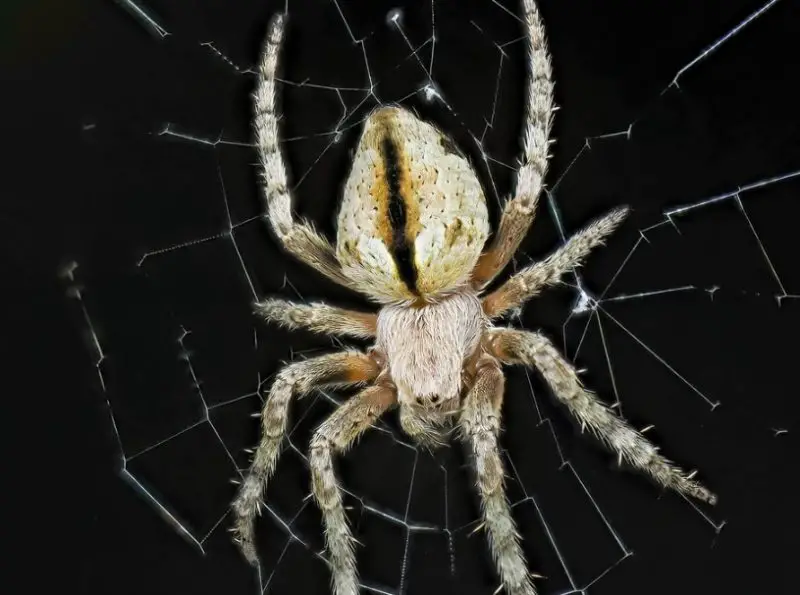
The Humpbacked Orbweaver (Eustala anastera) is a spider species that can appear in various colors, though it is most commonly brown or tan. Some individuals also display a white coloration with small black marks on their dorsal side and legs. As an orbweaver, this spider is well-known for constructing intricate silk webs. These webs are typically built in shrubs or trees, where the spider waits to ambush prey that gets caught in the web. The distinctive hump on its back helps it blend into its surroundings.
Despite being an orbweaver, the Humpbacked Orbweaver resembles jumping spiders due to its robust legs. These characteristics allow it to move quickly and efficiently, similar to its jumping relatives. April is the prime time to observe this species, as it emerges during this month in North and Central America, where it can be found weaving its webs in gardens and wooded areas.
Common Candy-striped Spider
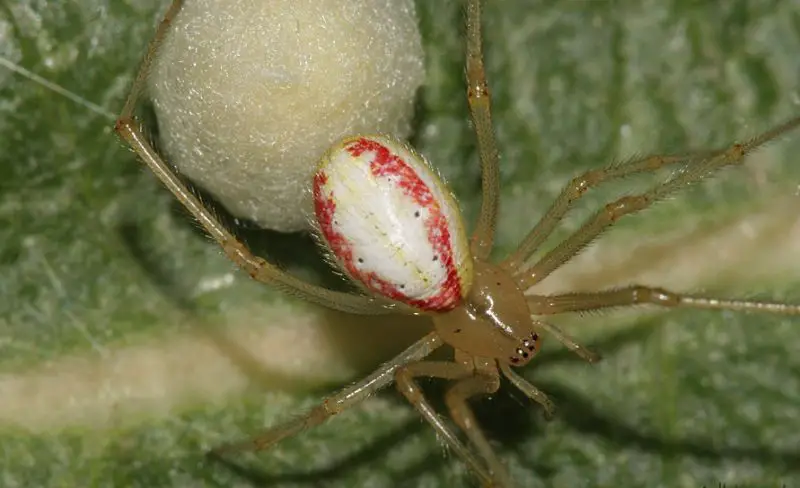
The Common Candy-striped Spider (Enoplognatha ovata), introduced to the United States from Europe, is known for its colorful appearance and bulbous abdomen. While this spider can come in a variety of colors, it is most commonly found in white with dark green stripes. Its legs are translucent, often with a hint of green coloring. This species is often seen in gardens and around homes, where it builds webs to catch a variety of small insects, including flies and wasps.
Spiders of this genus have the ability to partially change their color based on their environment. It can take up to three days for them to shift from white to pale green or pale yellow. Commonly seen from late spring to late fall, these spiders are considered both beneficial and harmful. They prey on predatory wasps, but they also consume bees and other flies, which can be a concern.
Female Common Candy-striped Spiders are particularly protective of their eggs. After laying egg sacs, the female guards them from potential predators, ensuring the safety of the next generation.
Oblong Running Spider
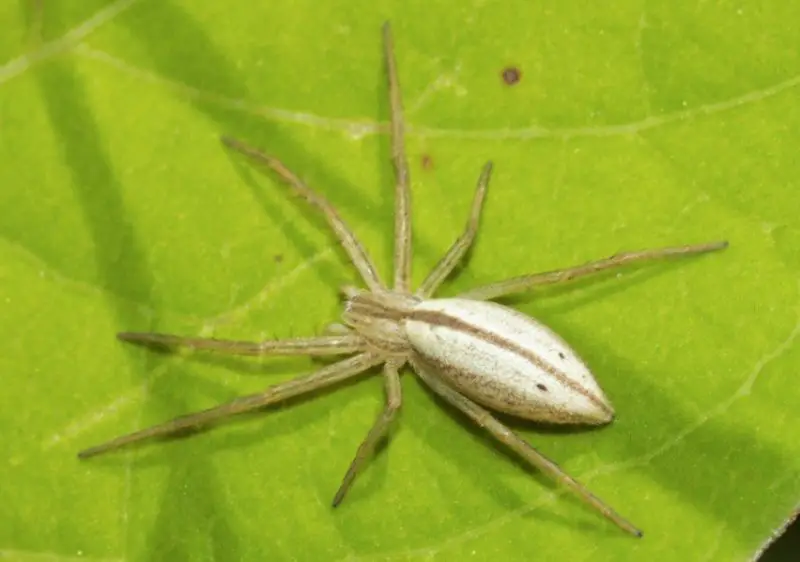
The Oblong Running Spider (Tibellus oblongus) is a species commonly found in dryland and grassland environments across North America. It can appear in various colors, ranging from green to white, and is easily recognized by the dark lines running across the middle of its abdomen. This species is known for its running behavior, rather than web-building, as it actively hunts and preys on smaller insects. It can often be spotted in orchards, parks, and woodlands during the warmer months.
This spider thrives in a variety of habitats, making it a common sight in areas such as orchards, parks, grasslands, and woodlands, especially from May to September when it is most active. It is a medium to large species, growing up to 10mm in length.
Females of the species are larger than males, but distinguishing between the two requires microscopic analysis of their genitalia. Despite their size and color variation, Oblong Running Spiders are known for their speed and are often seen running rather than spinning webs.
Green-legged Orbweaver
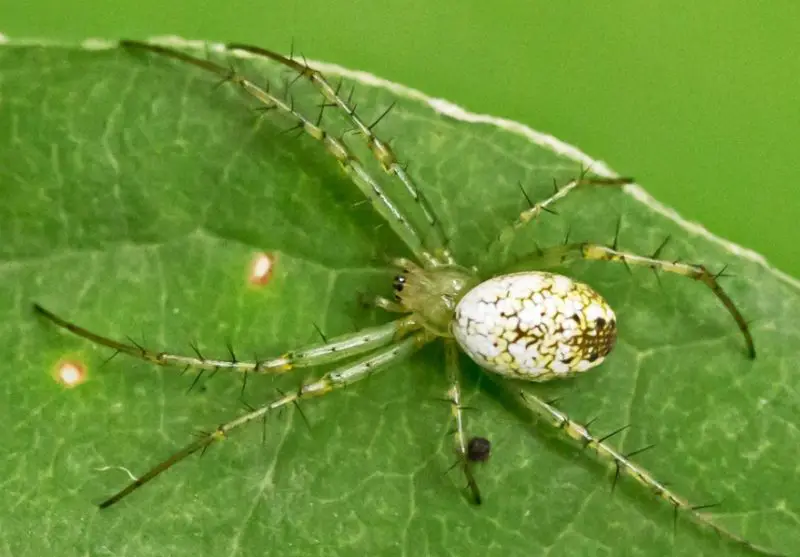
The Green-legged Orbweaver (Mangora maculata) is a striking species known for its vibrant green legs. The spider’s legs are dark green, while its dorsal side is white with green spots, giving it a similar appearance to the Marbled Orbweaver. This species is found in various habitats, including gardens and wooded areas, where it builds intricate orb-shaped webs to catch flying insects. Its distinctive coloration makes it easily recognizable, and both males and females can be seen constructing these webs, although females tend to build larger ones.
In terms of size, females are larger than males, and both can build spider webs, though females create larger webs. Mating typically occurs on the spider’s web, with the male approaching carefully to avoid vibrations that might alert the female, who could potentially eat him. Some males use a different strategy: they build a smaller web near the female’s and vibrate it to lure her into mating.
Both the male and female Green-legged Orbweavers’ webs are almost invisible to insects, making them efficient at trapping prey without drawing attention to themselves.
Kidney Garden Spider
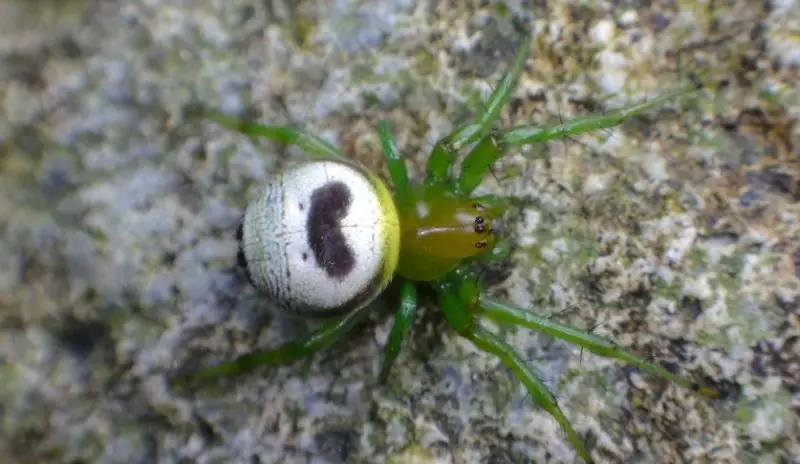
The Kidney Garden Spider (Bijoaraneus mitificus) is a white orbweaver spider, recognized for its distinct white and green coloration. Its abdomen is white, while its head and legs are green, giving it a striking appearance. As an orbweaver, this spider spins a characteristic orb-shaped web, though it does not sit at the center of it. Instead, it builds a smaller cocoon-like web nearby, where it remains hidden until an insect gets trapped in the larger web. Both males and females can be found in gardens, where they play a role in pest control.
Females of the species are significantly larger than males, with females growing up to 9mm and males reaching up to 5mm. The females build the largest, most complex webs, while males construct smaller webs next to those of females. These spiders are commonly found in gardens, where they spin their webs in shrubs, flowers, or dense plants like lemongrass.
Kidney Garden Spiders stay close to their webs, often tied to them with a thin silk line. They remain hidden in their smaller webs or curled leaves until the web vibrates, signaling that an insect has been trapped. At night, the spiders repair any damage to their webs from the day.
Australian Golden Orbweaver – White Spider With Red Legs
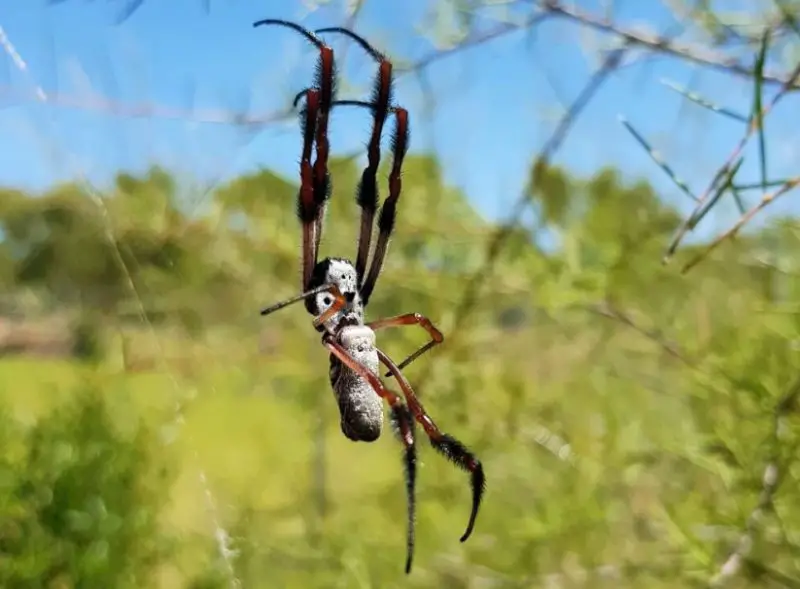
The Australian Golden Orbweaver (Trichonephila edulis) is one of the largest white spiders in the world, commonly found in Indonesia, Australia, and New Guinea. This species is easily identifiable by its mostly white body and dark brown legs. It is known for weaving one of the strongest orb-shaped webs, which can trap both small and large prey, including insects and even small birds. The webs are so strong that even small birds can become ensnared. Females are significantly larger than males, and the species is considered both a remarkable predator and an essential part of the ecosystem.
Females of the species are much larger than males, growing up to 40mm, while males rarely exceed 10mm. Females are responsible for building the web, which often hosts multiple male spiders. Some females prefer to keep several males in their webs, possibly for mating reasons. While the females tend to remain on the upper part of the web for safety, they will only drop to the ground if they feel truly threatened.
This spider is a prolific breeder, producing nearly 400 eggs per season. Interestingly, in parts of Papua New Guinea, the Australian Golden Orbweaver is considered a delicacy, where it is roasted and eaten as food.

